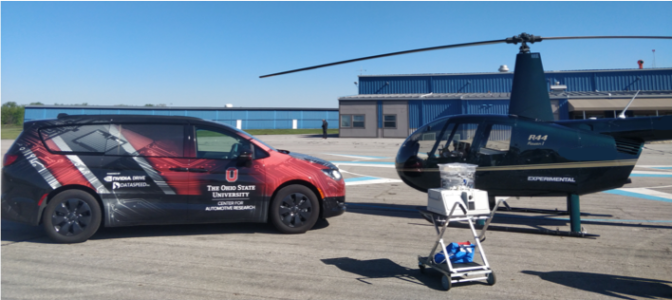Researchers at The Ohio State University are aiming to take autonomous driving to the limit.
Autonomous vehicles require extensive development and testing for safe widespread deployment. A team at The Ohio State Center for Automotive Research (CAR) is building a Mobility Cyber Range (MCR) — a dedicated platform for cybersecurity testing — in a self-driving car. Researchers and students will rigorously test the platform to identify potential safety and security issues as well as use it to educate a new generation of AV developers.
The vehicle, dubbed the “CyberCAR,” is a Chrysler Pacifica minivan outfitted with the NVIDIA DRIVE AGX Pegasus AI compute platform to enable level 4 autonomous driving capabilities.
The research pilot will initially focus on establishing standards and recommendations for best practices in AV safety and cybersecurity. CAR plans to use the vehicle as an ongoing tool for research, with safety and security at the center of every project.
This technology can be used in a wide range of connected and autonomous vehicle applications — recently, the CyberCAR was featured in a demonstration that used autonomous vehicles to quickly transport organs for emergency transplant surgeries.

And by conducting this development work on NVIDIA DRIVE, CAR is also training students on AI compute technology that is widespread in the AV industry.
“We are aiming to generate a workforce that understands these safety and security challenges, as well as one that is familiar with the DRIVE platform and equipped with the right AV skill set for success,” said Qadeer Ahmed, associate professor of research at the Departments of Mechanical and Aerospace Engineering, and Electrical and Computer Engineering, and associate fellow of CAR.
Tools for Success
Future cars will be packed with more technology than any computing system today. They’ll be completely programmable computers, and managing a system with multiple complex applications is incredibly difficult.
NVIDIA DRIVE compute platforms enable autonomous vehicle developers to build on centralized, high-performance and energy-efficient AI computing to process the array of deep neural networks running in the vehicle. It also allows new features to be added continuously via over-the-air updates.
The NVIDIA DRIVE platform also comes with a comprehensive software stack for developers to build an AV system — from the DRIVE OS operating system, to DriveWorks middleware, to DRIVE AV and DRIVE IX autonomous driving and intelligent cockpit software stacks.
“We needed to have a full-fledged, autonomous driving onboard computer optimized for AV functionalities for the Mobility Cyber Range,” Ahmed said. “The aim was to use those tools that would be highly accepted in the market and enhance student competitiveness.”
The Sky’s the Limit
Cybersecurity testing is just the beginning for the CAR research team.
Ahmed said the team plans to learn as much as they can from building the autonomous vehicle itself, then research the safety and security of individual modules, such as perception, planning and actuation.
This work will be used to inform industry best practices and standards to help ensure the successful widespread deployment of autonomous vehicle technology.
And by leveraging NVIDIA DRIVE solutions in the process, Ahmed’s students can continue to innovate in the field long after they’ve completed the program.
